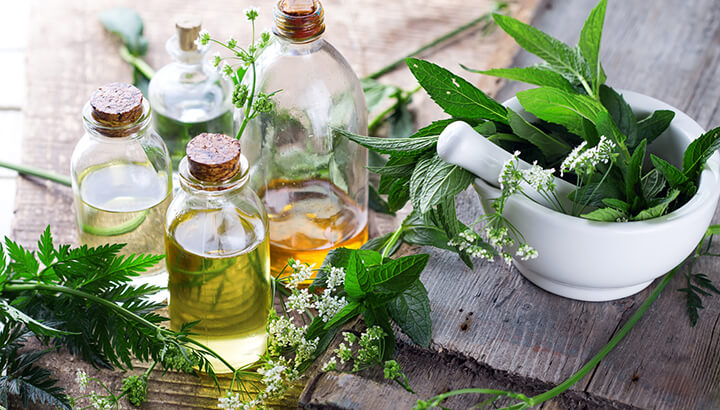
Anyone who suffers from chronic pain is looking for an effective way to manage it — or, better yet, get rid of it completely. Since chronic pain can be highly debilitating, many people are willing to try just about anything to ease it. This often leads people to pharmaceuticals, and this can be a perilous road.
Fortunately, there are many completely natural solutions which may help to ease chronic pain. One herbal remedy, in particular, has been the subject of recent research with promising results.
A bit about chronic pain
MedlinePlus, a publication by the National Institutes of Health, defines chronic pain as follows:
“Chronic pain is often defined as any pain lasting more than 12 weeks. Whereas acute pain is a normal sensation that alerts us to possible injury, chronic pain is very different. Chronic pain persists — often for months or even longer.”
Those who have to deal with this type of pain for a long duration of time experience more negative effects than just the pain itself. For instance, it may be difficult to work, engage in hobbies and enjoy quality time with family and friends when in the grips of pain. Additionally, the longer the pain lasts, the worse one’s mental condition may become. Depression and hopelessness may set in.
The National Institutes of Health’s Fact Sheet on pain management states that chronic pain is “the most common cause of long-term disability.” It’s also”the most common reason Americans access the health care system.” It also states that men and women may experience pain differently. One in four Americans has experienced pain for a period longer than 24 hours. Clearly, there is a dire need for effective solutions to chronic pain.
Opioid painkillers: A dangerous and addictive option
Many people who experience chronic pain are prescribed opioid painkillers by doctors. These are a popular option because this class of drug is very potent, and may temporarily eradicate many types of pain. However, these drugs come with a heavy cost in the form of some extremely nasty concerns and side effects.
The primary reason one may want to avoid opioids is their high potential for addiction. Opioid addiction is an epidemic in our nation. The Senate Caucus on International Narcotics Control reported that approximately 2.1 million people in the United States alone abused prescription opioid drugs in 2012.
Opioids also carry a high risk of overdose. The CDC reports that in 2010, just under 17,000 Americans died from opioid overdoses. That’s more deaths than from heroin and cocaine put together.
Aside from the frightening risks of addiction and overdose, opioid drugs are accompanied by a lot of potential side effects. One includes slow, shallow breathing, which can lead to death in the case of overdose). Other side effects include irregular heart rhythms, drowsiness, sleep disorders, digestive issues, lowered sex drive, osteoporosis (when taken long term) and tooth decay. It can even cause hyperalgesia, an instance where taking opioids actually lead to more pain, not less.
Additionally, over time, the human body becomes tolerant to these types of drugs, rendering the same dose ineffective. This leads to people taking higher and higher doses just to feel the same effect.
Anti-inflammatories come with their own set of dangers
Many types of chronic pain are inflammatory in nature. To combat this, some people use anti-inflammatory medications (NSAIDS), both prescription and over the counter, to relieve it. While these drugs do not possess the addictive nature of opioids, they do carry some potentially serious risks.
In the case of all NSAID drugs, the most common side effect is gastrointestinal tract damage. According to Dr. Byron Cryer of the American Gastroenterological Association, over half of all bleeding ulcer instances can be traced back to NSAID use. Other side effects of NSAIDs include severe allergic reactions, kidney damage and high blood pressure.
If you think that over the counter anti-inflammatory medications, such as ibuprofen, are safe, think again. These medications are linked to both heart attacks and strokes. The FDA has found that these risks are more prevalent than once thought, especially in people who have existing heart disease.
These risks don’t just appear after a long period of NSAID use, either. The FDA states that these events can occur after just a few weeks of use. According to Dr. Judy Racoosin, the deputy director of the FDA’s Division of Anesthesia, Analgesia and Addiction Products, “there is no period of use [of NSAIDs] shown to be without risk.”
Corydalis yanhusuo: New research on this ancient pain remedy
In light of all of the risks, chronic pain sufferers are looking for safe, natural options. Corydalis yanhusuo, also known as YHS, shows a lot of promise. Corydalis yanhusuo is a flowering plant that has been used for its pain relief properties in traditional Chinese medicine for thousands of years.
A recent study was performed by researchers at the University of California, Irvine, and published in the journal PLOS ONE. They studied the pain relief mechanisms of root extracts of Corydalis yanhusuo on mice. Researchers found that this root extract was effective at treating mild to moderate chronic neuropathic pain. Additionally, the researchers found that the use of Corydalis yanhusuo root extract did not amount to tolerance. The extract kept its pain-relieving potency over time.
Regarding the results of this study, Professor Olivier Civelli, the chair of pharmacology at UC Irvine, stated:
“YHS is not a highly potent medicine when compared to morphine. But I would propose that it can be used for low to moderate chronic pain.” Based on their research, the study authors further concluded that “since YHS is a dietary supplement commercially available in the United States, our data suggest that it might be a candidate for alternative pain treatment.”
This study builds upon previous research on Corydalis yanhusuo, performed in 2014 and published in the journal Cell Biology. For this study, researchers isolated a compound known as DHCB from the Corydalis yanhusuo plant. They then tested its analgesic (pain-relieving) effects. The authors of this research concluded that DHCB was, “effective against inflammatory pain and injury-induced neuropathic pain and furthermore causes no antinociceptive tolerance.”
If you are suffering from chronic pain, this is one herbal extract that is definitely worth talking to your physician about. While it may not be as effective for intense chronic pain, it may be sufficient when accompanied by another natural solution. Talking to your doctor about your natural options is an important conversation to have, especially if you don’t want to risk the side effects of prescription or over the counter drugs.
Note: As with any supplement, it’s crucial to know your source. Only buy from reputable companies that you trust. A lot of contamination and mislabeling goes on in the herbal supplements market, so be sure to do your homework.
Other 100 percent natural pain remedies
Pain relieving foods
There are many foods that have natural, potent anti-inflammatory and analgesic properties. Incorporating more of these foods into your diet may help significantly reduce chronic pain. It’s especially powerful as part of an overall healthy lifestyle (i.e., removing the junk food and focusing on holistic eating). Just a few examples of pain relieving foods include hot peppers, ginger, garlic and turmeric.
Essential oils
Used topically on the skin and as aromatherapy, essential oils may help to ease multiple forms of pain. A few potent examples include wintergreen, marjoram, lavender, spruce, clove and fennel. You should be sure to purchase high quality, therapeutic grade essential oils from a trusted source.

Acupuncture
Practitioners have found the ancient practice of acupuncture to help alleviate many instances of pain. Acupuncture may help to relieve pain from osteoarthritis, migraines, tension headaches and lower back and neck pain.
Yoga
Yoga is another ancient practice. People have used it for centuries to improve strength, flexibility and mental well-being. Plus, it can also fight pain. A 2012 study published in The Journal of Pain found yoga to be effective against chronic neck pain. The authors of the study wrote, “In this preliminary trial, yoga appears to be an effective treatment for chronic neck pain with possible additional effects on psychological well-being and QOL [quality of life].”
While this trial was only concerned with chronic neck pain, yoga may help to ease other types of chronic pain, as well.
Meditation
This is yet another tried-and-true ancient practice which has a wealth of benefits for your body and mind. A 2015 study published in The Journal of Pain found meditation to be effective against chronic neck pain. The benefits certainly don’t end there.

A combination of these natural remedies and practices may be just what you need to ease your chronic pain and get back to your life. Talk to a health professional you trust about which ones may work (alone and in combination) for your individual state of health. It may be one of the most important conversations you ever have!
— Tanya Mead

